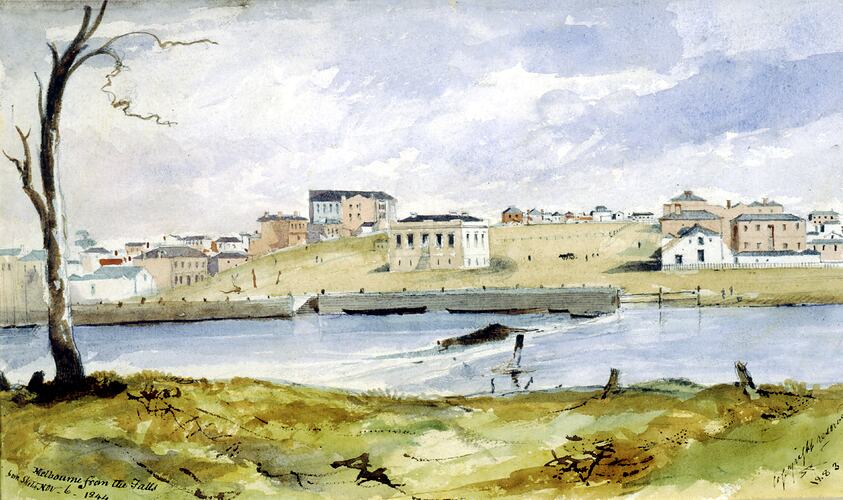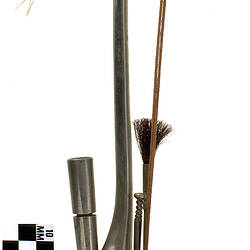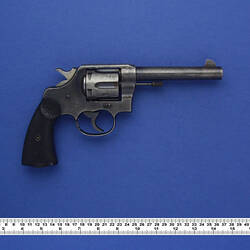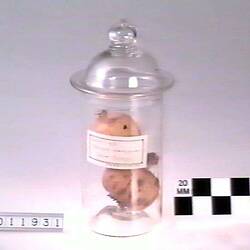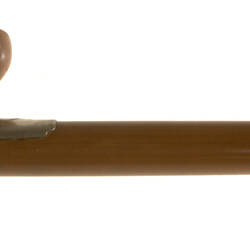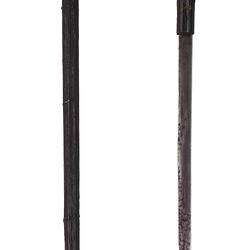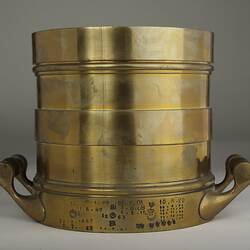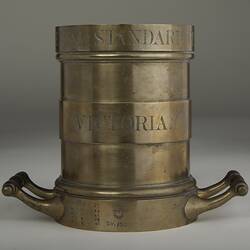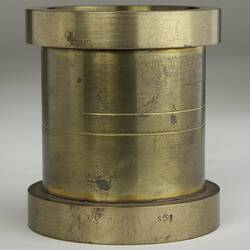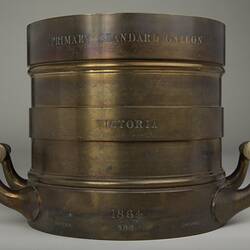Overview
The Customs House display explores the history of one of Melbourne's most important nineteenth century public buildings. Its location, construction and the people and activities it housed represent the story of Victoria's trade, immigration and government. It tells of Melbourne's achievements as well as its prejudices. The Customs House also provides an appropriate home for the Immigration Museum, with the historical connections between customs activities, immigration control and the arrival of immigrants. The display offers insights into the development of early Melbourne, customs and quarantine activities and the personal stories of two customs-related officials including the colourful customs detective, John Christie.
Further Exhibition Content
Three customs house buildings have stood on the site. The first was a structure described as a 'shabby, leaky, comfortless, weatherboard cabin' was shipped in pieces from Sydney and erected here during the 1830s. As trade increased, a two-storey bluestone Customs House was completed in 1841. Designed by the Government architect in Sydney, it was Melbourne's first stone building. However, by the 1850s critics called it one of the 'ugliest and most inconvenient of all our public buildings.' With the vast increase in revenue brought by the gold rush, the Victorian Government commissioned immigrant architect Peter Kerr to design a new Customs House. Although the building was occupied by Customs in 1858, a shortage of government funds prevented its completion. The building was finally completed in 1876, to a modified design by Kerr and two other government architects.
During the 1850s, an endless procession of customs agents and ship captains climbed the stairs to the Customs House. By this time, the building stood at the centre of a busy maritime precinct. The gateway to the Victorian goldfields and agricultural districts, the bustling port was a scene of continual activity. Newly arrived immigrants crowded the wharves. Ships brought supplies for the new colony, and departed with Australian wool and gold. Imported goods were hauled to the nearby Western Markets, or stored in the many commercial bond stores that ringed the area. Private wharves and crowded warehouses lined the waterfront, and the offices of navigation companies and ship owners were nearby. Numerous hotels, attracted by the commercial opportunities in the busy precinct, offered temporary accommodation for travellers and immigrants, and entertainment to visiting sailors.
Customs officers controlled immigration into Victoria, and any person regarded as undesirable could be refused entry. They inspected luggage and validated documents, determining whether the identity of immigrants matched the papers they carried. They also inspected ships carrying assisted immigrants from Britain. Shipowners and captains could be fined for overcrowding or providing insufficient food. If a ship arrived carrying passengers with lethal infectious diseases such as typhoid or cholera, customs officers would place the ship in quarantine.
Key Exhibition Objects
- Standard imperial half gallon, used by the Customs Department from 1963 to 1902. Standard weights were important in the calculation of tariffs. Customs officers had to measure and weigh goods, in order to calculate the amount of duty to be paid by the importer.
- Christie's Sword Stick. Described as Victoria's real life Sherlock Holmes Christie's work for the Custom's Department included tracking down smugglers of opium and tobacco, breaking up illicit stills, holding border smugglers at Wodonga, and catching George Robertson importing prohibited books and confiscating bubonic bacilli at Macarthur.
- Chinese opium items
Related Collection Objects
- Counter, Customs House Williamstown, circa 1871
- Wall Clock, Thomas Gaunt, Customs House, Melbourne, 1877
- Baggage Label, Australian Customs, 1950s - Doll, Italian migrant, 1963
- Leaflet, Plant Quarantine, 1957
- Booklet, 'Facts About Customs', 1956
- Shipboard Leaflet, Australian Customs, 1960
- Australian customs items
Other Resources
- Old Customs House Website
- Station Pier Website
Objects featured in our long term exhibitions are changed over regularly both for preservation reasons and also to maintain a diverse representation of stories, communities and cultures. Both current and past Museum Victoria objects displayed in this exhibition are listed below.
More Information
-
Keywords
Museum Victoria Exhibitions, Immigration Selection, Assisted Immigration, Immigration Policies, Immigration Debates, Immigration, Immigration Voyages, Migration & Settlement
-
Authors
-
Article types
